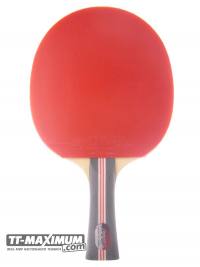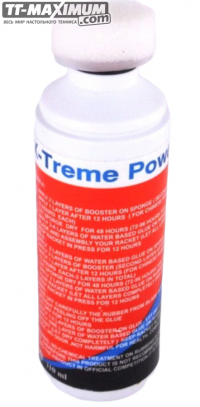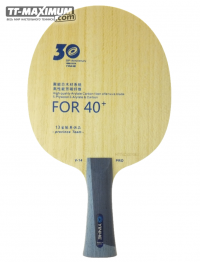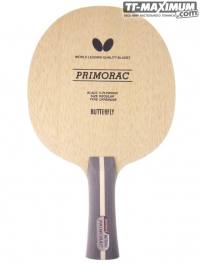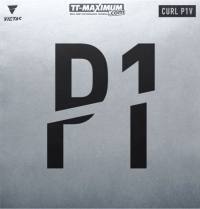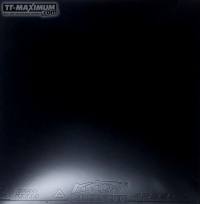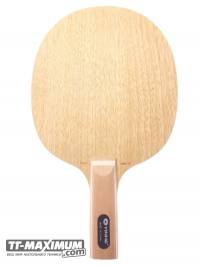Перевод статьи можно прочитать здесь
by Greg Letts - an Australian state coach, an International Umpire and one of the top ranked players in his country.
One of the most frustrating experiences in Table Tennis can be playing someone who imitates a wall and sends every ball you hit right back at you! I've been there and done that a few times, so today I'm going to list a few suggestions for you to use when trying to get past these modern day counterpunchers.
Put yourself in their shoes
My first suggestion would be to consider your opponent and how he approaches the match. Is he an aggressive blocker, looking to use his block to out-manuever you and set up his own attack? Or is he the wall-like defender, content to simply put every ball back on the table and wait for you to beat yourself as you hit harder and harder, and try to angle the ball wider and wider?
Aggressive blockers must be handled with care, since any lapses in concentration on your part will be swiftly punished with lightning counter-attacks. You can't afford to let up against these guys at all - you must stick to your game plan at all costs. Every weak attack or bad push that you make will cost you. I'll talk a bit more about what your plan should be in a little while, so stick with me.
Against passive blockers you have a little more margin for error, since you know that you can push the occasional high ball, or make a less than perfect attack, and they won't punish you for it. The mistake to avoid here is getting sloppy and losing your concentration or form. The passive blocker is still out to win, make no mistake about that. It's just that he would rather wear you down bit by bit, letting you beat your brains out against his defence while he reduces you to a long dribble of sweat (a line I stole from squash great Jonah Barrington). They love nothing more than watching you slowly lose your cool, your temper, and your mind as they stick their bat out and plod the ball back again and again. So remember, you have a little bit more margin for error, not a lot. Use it intelligently and to your advantage, by playing with a little more spin and less pace while you wait for the right ball to put away.
Get Rhythm (not!)
The typical blocker thrives on matches where he can play at his own rhythm. It's up to you to find out what that rhythm is, and avoid it most of the time. Does he prefer to block against flat, fast drives? Or is he better against the slower, spinnier loops? Does he like to play crosscourt or down the lines? Does he favour his forehand or backhand block? These are the things you need to know in advance, or find out fast when the match starts. Remember, the pace of the ball, the spin on the ball, the depth and placement of the shot, and the height of the ball can all be varied by you - somewhere in that combination will be a return your opponent is not comfortable against - probably more than one. Your job is to find out which ones they are.
It's OK if your opponent hits a few winners while you are trying to find his weaknesses. It's the price you pay for not scouting him out in advance. Anyway, knowing what he likes helps you to narrow down what he doesn't like. Once you find out what that is make sure you give him lots of it.
Patience, young grasshopper
Most people would advise you to be patient against blockers. This is not bad advice, but it is important to add a proviso - don't try to beat the blocker at his own game. Just like the old adage goes "Don't try to argue with a fool - they'll drag you down to their level and beat you with experience", don't suddenly try to out-block the blocker - you'll be playing the game that they have been practicing for years.
In this case, patience means waiting for the right ball to attack with power, and controlling your aggression until it comes along. Against aggressive blockers you need to use whatever return they don't like often, while you wait for that setup ball to come along. Whether it's slow, heavy spin deep on the table, or light high topspins to the wings, grit your teeth and keep using it until you get the return that you know you can put away with power. Against passive defenders you have a little bit more leeway, and can push a bit higher, and take less risks with your normal attack, since you know that they aren't likely to counter-attack you too much.
Some folks take the opposite approach, trying to blast through a blocker using their hardest attacks all the time. This is known as the 'I'm going to play my game regardless' approach, and can sometimes even be seen at world class level (Kim Taek Soo - I'm talking to you!) While this is a tactic, this will usually only work if your level of attacking is well above your opponent's level of blocking. And if that is the case, you could probably beat him half a dozen different ways anyway. It's when you come up against an opponent near your level that you can't just hit through that good tactics become important.
One whack or two?
Hand in hand with the idea of patience is the question of what to do when your power attack comes back, as it often will do against a good blocker. Do you go back to waiting mode, and look for another attack later? Or do you keep hitting it hard until you or the opponent win the point?
I'd recommend keeping an open mind on this question - it really depends on the quality of the return, and whether you are in good position to attack a second time. Look for the second strong attack, and if you think you can make it, have a go. If it's too tough, go back to your standard attack and wait for another chance. Then, as the match goes on, keep track of whether the second attack is working for you - if you are winning most of them, keep on hitting. If you are making too many mistakes, stick to hitting the easy put aways and go to your standard attack for the rest.
Don't be re-served!
Against a good blocker, some players seem to give up on serving and returning serve at their best, thinking that it's a waste of time, since the blocker is going to be able to handle the third ball attack, and is not likely to attack with their own third ball. Don't be one of these players. Intelligent use of your own serves can help you get your chance to hit the ball hard that much faster, which helps cut down the chances of you making a mistake while waiting to get the setup. And good service returns keeps the blocker under pressure, stopping him from getting any easy attacks for cheap points. So pay attention right from the start.
Forehand - no - backhand - no - darn!
Use that area of indecision that your opponent has, where he must decide to hit with his forehand or backhand side. (For penholders, try to catch them where the tip of the bat is straight down - it's pretty hard to block over a spinny ball at that point). Every opponent will have a slightly different area where he tends to get caught deciding between backhand and forehand - it's up to you to find it and exploit it.
Some weaker opponents also tend to keep the bat waiting on the same side as their last shot (ie keep the bat ready for a backhand after hitting a backhand). Against these types of players it's often a good idea to give a couple of attacks to one side, before hitting into the area of indecision. They'll generally stay on that side and move to take it with the same shot. You can them hit to the area of indecision a couple of times, moving them further over to one side of the table, before hitting a ball into the gap they have left behind. The beauty of this strategy is that you don't even have to hit the final ball hard, since they have left you a wide open gap to aim at. Lovely!
The Temptations
No, not the band, but your strategy of giving the passive blocker the opportunity to attack now and then. Passive blockers usually lack a good attack, and can be weak against a well executed counter-attack, since they aren't used to these sort of rallies. So don't be afraid to let your passive blocker opponent make the occasional attack, but make sure that you make your shot tempting enough to entice him to hit, but with enough spin or placement to make it hard to put away. And be ready for the attack of course!
The Usual Suspects
These are the usual tips that most people would give you when playing against blockers. Again, there is usually some value in them, but every now and again you'll come across opponents who won't be affected. A handful of tips can't replace the intelligent use of your brain in a match, so be prepared to discard those tips that aren't working.
Loop both short and deep, and with good angles. Many blockers prefer to plant their feet, and are weak when blocking on the move. Also, many blockers stand very close to the table, and so can be weak against very deep balls.
Use high spinny loops to avoid giving your opponent any pace to work off.
Loop to the middle to avoid giving your opponent the opportunity to use wide angles against you.
Chop beats block - so use more pushes in your game before choosing a ball to attack hard.
If you have a good backhand attack, use this to open your attacks more often. Backhand opens can be performed more quickly than forehands, and can be harder to determine which direction they are going.
Conclusion
Playing a good blocker can be a real struggle and a battle to keep your composure. Hopefully some of the suggestions above can help those of you who are struggling to get past these supremos of close to the table play. Best of luck!
© 2005-2009 Greg Letts

